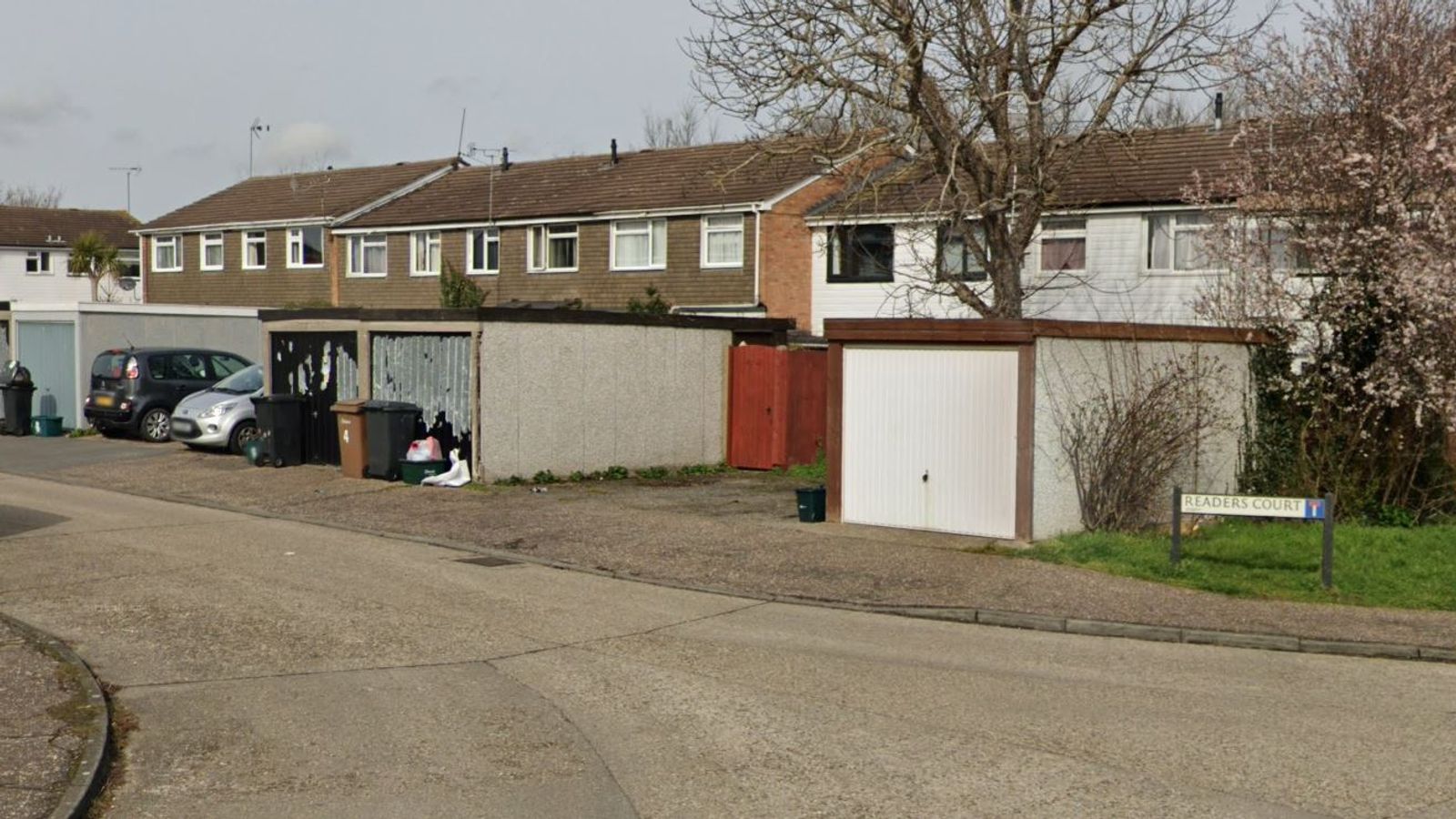
The rise and fall of the Terra blockchain and family of related tokens is both one of the most convoluted and one of the most important stories happening in crypto right now.
Assembled here is a plaintext explanation of what Terraform Labs built, why it got so big, why it imploded, what it means for the markets, and what you need to know to keep yourself safe from similar projects in the future.
What exactly is Terra?
Thats a great question, and we will answer it. But first, lets found a bank.
Our bank will do all the usual bank things like take deposits, pay interest, enable payments and make loans. Obviously, we could restrict ourselves to only loaning out money we actually have, but that is tedious and unprofitable. So, like any bank, we will make more loans than we receive in deposits and keep only a fraction of our customers’ deposits available as cash to withdraw when they need it. The amount we will keep available as cash is 0%.
It will be fine! Since we are loaning out 100% of our reserves, we will be very profitable; and since we are very profitable, we will be able to pay very high interest rates. No one will want to withdraw! If we ever do need money, we can sell stock in our very profitable bank. When demand for our deposits grows, we can use the new money to do stock buybacks. Since everyone is confident in the value of our stock, they will know we can back up our deposits; and since everyone is confident in the demand for our deposits, they will value our stock. Nothing could go wrong.

Okay. One thing that could go slightly wrong is that this is all illegal for a variety of reasons, so well need to run our bank on a blockchain and issue our deposits as stablecoins but thats fine. The difference between a bank deposit and a stablecoin is mostly regulatory optics.
Thats roughly the business model of the Terra ecosystem. Terra is a blockchain built by Terraform Labs that uses a stablecoin, TerraUSD (UST), and a reserve token, LUNA, to stabilize the stablecoin’s price. You can think of Terra as a digital bank, with UST representing deposits and LUNA representing ownership in the bank itself. Owning UST was like making a deposit in an uninsured bank offering high interest rates. Owning LUNA was like investing in one.
What makes a stablecoin stable?
Stablecoins themselves are not necessarily all that hard to build. There are a lot of them, and for the most part, they work in that they largely trade for around $1. But most surviving stablecoins are collateralized, meaning they represent a claim of some kind on a portfolio of assets somewhere backing the value of the coin. UST, on the other hand, was not backed by any independent collateral the only thing you could exchange it for was LUNA.
To keep the price of UST stable, the Terra protocol used a built-in exchange rate where anyone could exchange 1 UST for $1 worth of LUNA. When demand for UST exceeded its supply and price rose above $1, arbitrageurs could convert LUNA into UST at the contract and then sell it on the market for a profit. When demand for UST was too low, the same traders could do the opposite and buy cheap UST to convert into LUNA and sell at a profit. In a sense, the Terra protocol tried to eliminate price movements in UST by using the supply of LUNA as a shock absorber.
The trouble with this arrangement (and with algorithmic stablecoins generally) is that people tend to lose faith in the deposits (UST) and the collateral (LUNA) at the same time. When Terra most needed LUNA to prop up the value of UST, both were collapsing, and the result was like offering panicking customers in a bank run shares in the failing bank instead of cash.
You could convert your deposit into ownership of the bank, but you couldnt actually withdraw it because the bank itself didnt own anything at all.

A brief history of catastrophic failure
Stablecoins themselves are not necessarily all that hard to build. There are a lot of them, and for the most part, they work in that they largely trade for around $1. But most surviving stablecoins are collateralized, meaning they represent a claim of some kind on a portfolio of assets that back the value of the coin. UST did not have any independent collateral the only thing you could exchange it for was LUNA.
TerraUSD was not the first attempt at building an uncollateralized stablecoin. The streets of crypto are littered with the bodies of previous failures. Some prominent examples include Ampleforth, Empty Set Dollar, DeFiDollar, Neutrino USD, Bitshares, NuBits, the Empty Set Dollar, Iron/TITAN, SafeCoin, BitUSD, CK USD, DigitalDollar and Basis Cash. (Remember that last one in particular for later).
These arrangements work in a bull market because it is always possible to lower the price of something by increasing the supply but they fall apart in bear markets because there is no equivalent rule that says that reducing the supply of something will cause the price to go up. Reducing the supply of an asset nobody wants is like pushing a rope.
Beware of protocols with cyclical economic pressures. If they reward richly during upcycles when lots of people buy in, they also likely punish quickly during downcycles when most are looking to exit.
— Do Kwon (@stablekwon) July 26, 2020
We have a word for that already
To bootstrap demand for TerraUSD (UST) Terra paid a 20% interest rate to anyone who deposited UST into its Anchor protocol. That also created demand for LUNA, since you could use it to create more UST. But since there was no revenue stream to pay for that interest it was effectively paid for by diluting LUNA holders. In a sense Terra used UST investors to pay LUNA investors and LUNA investors to pay Terra investors. In traditional finance the term for that is “Ponzi scheme.”
Terras real innovation on the traditional ponzi was splitting its targets into two symbiotic groups: a conservative group that wanted to minimize downside (UST) and an aggressive group that wanted to maximize upside (LUNA). Pairing ponzi-like economics with a stablecoin let Terra market itself to a much wider range of investors, allowing it to grow much larger than previous crypto ponzis.
The infamous Bitconnect ponzi reached ~$2.4B before imploding. PlusToken and OneCoin grew to ~$3B and ~$4B respectively before their collapse. The Terra ecosystem peaked with ~$40B of market cap in the LUNA token and ~$18B in TerraUSD. By comparison, Bernie Madoffs decades-long ponzi only cost investors somewhere between $12-20B. A relative bargain!

Hubris as collateral
Most ponzis lie to their investors about how they work but Terra didnt need to the system was already complex enough that most investors were relying on someone they trusted to evaluate the risks for them. Crypto industry insiders familiar with the history of algorithmic stablecoins were sounding the alarm, but they were drowned out by the long list of venture capitalists, influencer accounts and investment funds that had invested in Terra in some way.
Ponzi schemes, algorithmic stablecoins and free-floating fiat currencies are all backed in some sense by pure confidence and the key figures in the Terra ecosystem were all overflowing with confidence. Many retail investors simply trusted in the overwhelming confidence of leaders in the space and leaders drew their confidence from the rapid growth of retail investors.
Do Kwon, the charismatic and controversial founder of Terra is somewhat famous (now infamous) for his brash dismissal of critics on Twitter. He made a $1M personal bet on the success of LUNA back in March. He named his infant daughter “Luna.” And he was hardly alone consider billionaire Mike Novogratzs new tattoo:
— Mike Novogratz (@novogratz) January 5, 2022
The history of algorithmic stablecoins and their danger is well known to industry insiders and it certainly would have been obvious to Kwon. Remember Basis Cash from the list of previously failed stablecoins above? A few days after the Terra collapse Coindesk broke the news that Kwon was one of the two anonymous founders of Basis Cash. Not only should Kwon have seen it coming, he had done it before.
So Kwon and his major investors werent oblivious to the risks of algorithmic stablecoins, they were just cocky enough to think they could outrun them. The plan was for Terra to become so large and interwoven with the rest of the economy that it was literally too big to fail.
This was ambitious but not necessarily insane. The free-floating fiat currencies of the world (like the USD) maintain their value because they are tethered to a large and functioning economy where that money is useful. The USD is useful because everyone knows it will be useful because there are so many people who use it. If Terra could jump start their native economy (and bind it together with the rest of crypto) perhaps it could achieve that same self-fulfilling momentum.
The first step was to build unshakeable confidence in the peg. As part of that strategy the Luna Foundation Guard or LFG (a non-profit dedicated to LUNA) began accumulating a reserve of ~$3.5B worth of Bitcoin, partially to defend the UST peg but mostly to convince the market that it would never need to be defended. The ultimate goal was to become the largest holder of Bitcoin in the world, explicitly so that the failure of the UST peg would cause catastrophic Bitcoin sales and the failure of UST would become synonymous with the failure of crypto itself.
To raise the funds needed to buy that Bitcoin LFG could have sold LUNA, but selling large quantities of LUNA into the market would interfere with the growth narrative that fueled the whole economy. Instead of selling LUNA directly, LFG converted it into UST and traded that UST for Bitcoin. The bank of Terra had expanded its liabilities (UST) and lowered its collateral (LUNA). They had increased their leverage.
The endgame of @stablekwon attaching @terra_money's success to bitcoin is becoming clearer:
As the largest single holder of bitcoin behind only Satoshi, could UST become too big to fail?
The failure of UST is equivalent to the failure of crypto itselfpic.twitter.com/m5hVQFr60G
— Zack Guzmn (@zGuz) March 30, 2022
Slowly at first, then suddenly
In theory one reason an investor might hold UST would be to use it in the Terra DeFi ecosystem, but in practice in April ~72% of all UST was locked up in the Anchor protocol. To a first approximation the only thing anyone really wanted to do with UST was use it to earn more UST (and then eventually cash out).
The plan was to grow Terra like a traditional Silicon Valley startup by bootstrapping growth with an unsustainable subsidy but then slowly winding it down as the market matured. At the start of May Terra began reducing the interest rate paid out to Anchor deposits, which caused billions of dollars of UST to begin exiting Terra and putting pressure on the UST peg. At first the price slipped only a few cents below the target, but when it did not recover the market began to panic.
At that point massive amounts of UST were sold into the market, perhaps by investors sincerely trying to escape their UST positions at any cost or perhaps by motivated attackers hoping to deliberately destabilize the peg. Either way the result was the same: the price of UST collapsed and the supply of LUNA exploded. The LFG tried to raise outside funds to rescue the peg but it was too late. The confidence that powered the whole system was gone.
Another thing that was gone was the ~$3.5B worth of Bitcoin LFG had raised to defend the UST peg. LFG claims the funds were spent defending the UST peg as intended, but they have not provided any kind of audit or proof. Given the amount of money involved and the lack of transparency people are understandably concerned that some insiders might have been given special opportunity to recover their investment while others were left to burn.
On May 16th Kwon announced a new plan to reboot the Terra blockchain with a forked copy of LUNA distributed to existing LUNA/UST holders and no stablecoin component. The price of both tokens stayed flat. Forking the Terra code is easy enough but recreating the confidence in Terra is not as easy.
Do Kwon: “95% are going to die [coins], but there's also entertainment in watching companies die too”
8 days ago. Ironic. pic.twitter.com/fEQMZIyd9a
— Pedr (@EncryptedPedro) May 11, 2022
Aftermath and Opportunity
The immediate destruction of wealth held in LUNA or UST is enormous enough but its only the beginning. Unlike the other ponzis above, the Terra blockchain was home to the third largest DeFi economy (after Ethereum and Solana), with a rich ecosystem of startups and decentralized applications building on top of it. Investment firms held UST and LUNA in their funds, dApps used them as loan collateral, DAOs kept them in their treasuries. The real damage is still unfolding.
Damage has been done as well to the publics understanding of the risks and opportunities of stablecoins and of crypto generally. Many will come away believing not just that Terra is a ponzi but that all stablecoins are or maybe even all cryptocurrencies. Thats an understandable confusion given how complex the actual mechanics of UST and LUNA are.
All of this is going to complicate the regulatory story for stablecoins and DeFi for years to come. Regulators are already using Terra as an argument for greater intervention. The SEC was already investigating Terraform Labs for unrelated securities violations, they will undoubtedly be opening an investigation into UST as well. Do Kwon has been sued for fraud in Korean courts and called to testify by the Korean parliament. More legal action is probably on the way.
Bitcoin on the other hand is looking surprisingly resilient. The Bitcoin economy is largely independent from the DeFi economy and sheltered from the contagion of the collapse of UST and LUNA. The price dipped as it weathered ~$3.5B of sustained selling while the Luna Foundation Guards reserve was liquidated but it has largely recovered since and in the process revealed a lot of deep pocketed buyers interested in accumulating at those prices. The collapse of Terra has mostly strengthened the case for owning Bitcoin.
How to spot a ponzi before they spot you
The lesson of Terra should be dont build an algorithmic stablecoin but of course the lesson that many people will actually take away is build your algorithmic stablecoin a little differently so no one recognizes it. Justin Sun of Tron is already building and marketing a Tron-based clone of Terra. As the laundry list of examples in the history section above shows, more attempts to build a financial perpetual motion machine are coming. To invest responsibly in the crypto space you need to learn to be able to identify them before they collapse.
If you get burned by a textbook ponzi scheme you have noone but yourself to blame.
Dont FOMO in after crypto influencers.
Most of them are dumber than you.
— Do Kwon (@stablekwon) July 26, 2020
The simplest way to spot a ponzi is to remember this simple rule: if you dont know where the yield comes from, you are the yield. Dont be intimidated by complexity you dont need to understand all the mechanics of a system in order to understand who is paying for it. Profit always comes from somewhere. If there isnt an obvious source of incoming revenue, the money is probably coming from incoming investors. Thats a ponzi scheme. Dont buy in even when the price is going up.
Knifefight is the author of the Something Interesting blog












